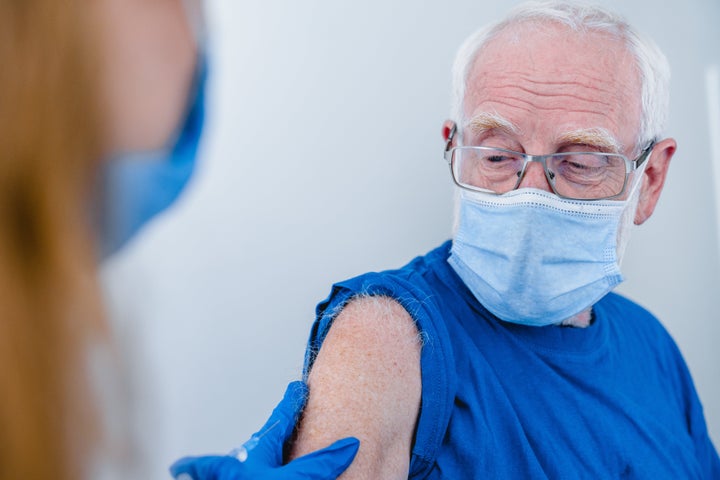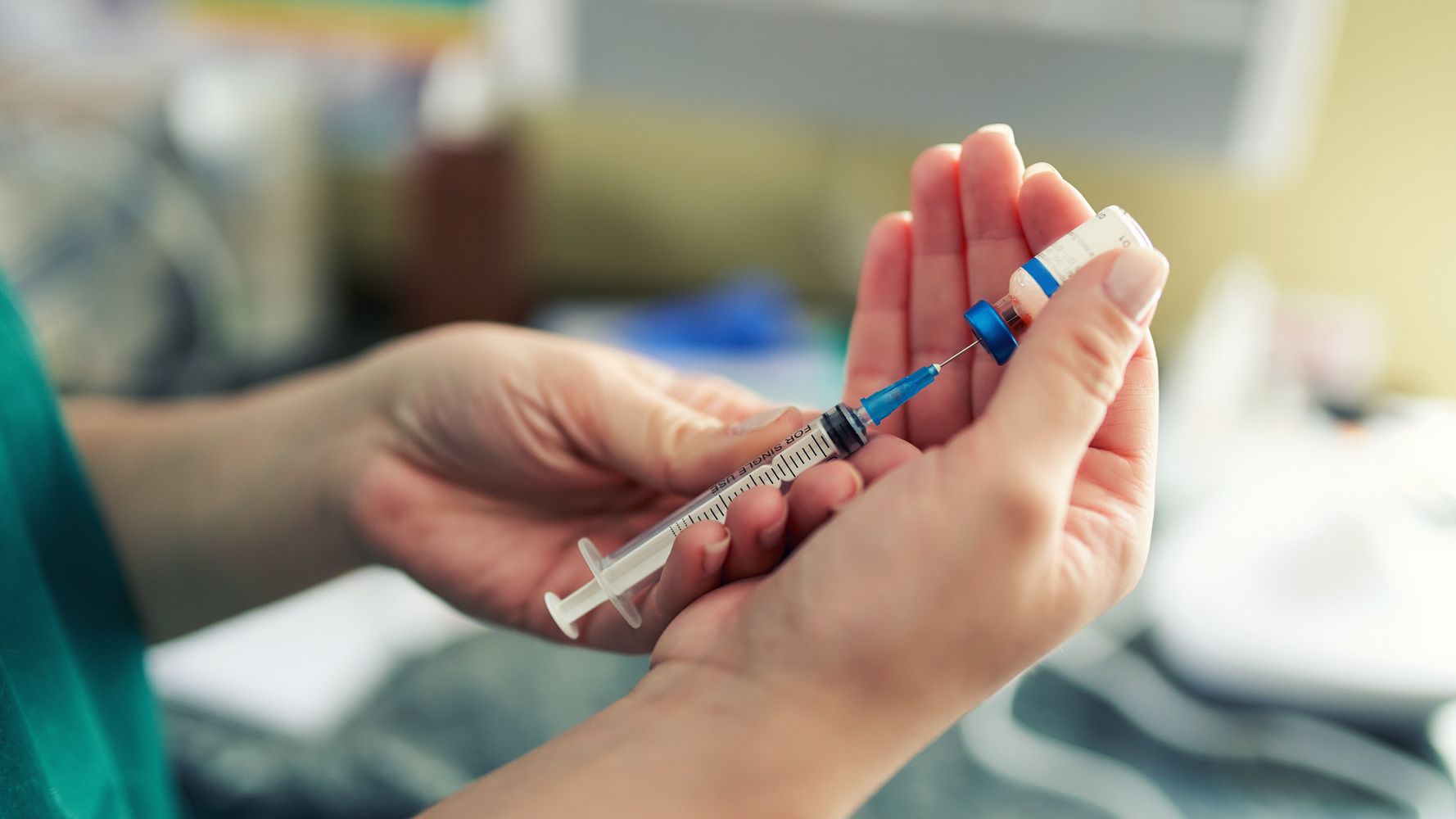[ad_1]
When Pfizer and BioNTech announced their astounding SARS-CoV-2 vaccine efficacy results in November, Arthur Reed was ecstatic.
“The global investment and coordination of billions of dollars enabling this unprecedented pace of scientific discovery is truly an incredible achievement,” he said.
But as a gay man in New York City living with HIV since the 1980s, he couldn’t help but wonder about the government and public response to SARS-CoV-2, the virus that causes COVID-19, compared to the early days of HIV/AIDS.
“Unfortunately, in both cases there has been immense stigma against minority communities,” Reed said. “Calling COVID-19 the ‘Chinese Virus,’ and the ensuing rise in anti-Asian scapegoating, feels eerily similar to when people labeled HIV as ‘gay-related immune deficiency’ and shunned us from society.”
What Reed finds especially triggering are the COVID-19 hospital policies that don’t allow visitors, and the patients having to die alone in isolated hospital beds. Media images of FaceTime farewells and sparsely populated funerals painfully remind him of an earlier decade, when patients with HIV/AIDS — many of whom were his closest friends — also died alone. This happened not only because of hospital policies, but because of discriminatory social dynamics and a vicious lack of acknowledgement of the deadly disease at the uppermost rungs of the federal government.
“I lost over 100 friends in the early days of HIV. And it was awful, because these people were like my family,” he said. “The worst part of it all was that it also took my partner’s life.”
The deep and reverberant trauma from these losses and his own fight against the virus have motivated him to keep up with the latest research on HIV. And while he has nothing but awe and praise for the scientists working on these viruses, he cannot help but wonder how a vaccine against SARS-CoV-2 was developed in less than a year — especially since developing new vaccines is a process that typically takes eight to 10 years — while there’s been nothing on the horizon for HIV in nearly four decades.
Reed’s not the only one wondering about this. On World AIDS Day, observed annually on Dec. 1 ― which this year fell only a few weeks after Pfizer’s announcement ― commenters on Twitter amplified the differences between SARS-CoV-2 and HIV vaccine development. Many offered conspiratorial “explanations” for the lack of an HIV vaccine.
Some theorized that the sole reason for this discrepancy is that HIV mostly affects trans people of color and men who have sex with men — marginalized groups without much political clout. Since SARS-CoV-2 is affecting all levels of society (even though the ultimate health outcomes are worse for ethnic minorities), they believe it has garnered quicker attention and unprecedented monetary investment, leading to a (thus far) successful vaccine.
Other commenters have falsely claimed that HIV is “money-making” for governments and pharmaceutical companies alike, and so vaccines have been strategically withheld.
It’s always hard to argue against more funding, since every step of the scientific discovery process is extremely resource-intensive. But it is worth noting that since 1982, federal funding for HIV has increased exponentially, to nearly $35 billion in 2019 alone. Additionally, private funders like the Bill & Melinda Gates Foundation have provided critical financial support over the decades.
To put this in the financial context of Operation Warp Speed ― a public-private partnership initiated by the United States government to facilitate SARS-CoV-2 vaccine discovery, therapeutics and diagnostics ― nearly $18 billion has been budgeted for the project.
“At the moment, I don’t think funding is necessarily the biggest bottleneck to an HIV vaccine breakthrough, although more funding never hurts,” said John Moore, a professor of microbiology and immunology at Weill Cornell Medicine in New York City who has been studying HIV vaccine development for over 20 years.
“At the end of the day, it’s the fundamental differences in the biology of HIV and SARS-CoV-2 that make developing a vaccine so difficult — not for a lack of trying,” Moore said. He dismissed the conspiracy theories as “absurd.”
“Some of these conspiracy theories have unfortunately been around for a while,” said Gregg Gonsalves, an assistant professor of epidemiology at the Yale School of Public Health and a renowned HIV activist. “Now more than ever, we have to continue meeting people where they’re at and identify trusted messengers within communities to dispel these myths.”
“At the end of the day, it’s the fundamental differences in the biology of HIV and SARS-CoV-2 that make developing a vaccine so difficult — not for a lack of trying.”
– John Moore, professor of microbiology and immunology at Weill Cornell Medicine
Why making a COVID-19 vaccine was faster
While it feels intuitive to compare the two viruses, there are only a few molecular-level similarities. The most prominent is that they both have “spike” proteins ― knob-like structures jutting out of their surfaces (though the structures on the two viruses differ in composition).
Both viruses use these spike proteins to bind to receptors, which are molecules that sit on the surfaces of human cells. In the case of SARS-CoV-2, the virus binds to cells with the ACE2 receptor found in the lungs, small intestine, blood vessels and many other parts of the body — which is why it is not surprising that COVID-19 affects so many different organs. HIV, however, binds to different receptors of immune system cells.
After entry into the cell, the two viruses do very different things. SARS-CoV-2 makes numerous copies of itself, which allows it to go on to infect more cells in the body.
HIV, on the other hand, has a much more sophisticated replication process. One of the most notable differences is that HIV particles have a way to replicate the virus’ genetic material so it becomes integrated into the human cell’s DNA. SARS-CoV-2 cannot emulate this mechanism.

So what does all of this mean for vaccines? What makes it so difficult to produce one for HIV?
“Among a whole host of factors, HIV has an extremely high mutation rate that impacts the architecture of the spike protein antibody recognition sites. And these mutations can happen daily, which is a significant challenge to HIV vaccine development,” Moore said. “On the other hand, the SARS-CoV-2 spike protein has been fairly static up until recently.” This gave scientists a chance to develop an effective vaccine, since that spike protein wasn’t changing too much.
SARS-CoV-2 mutants are now gaining traction. But there is little evidence so far to suggest that the currently available vaccines will be ineffective against these mutant strains. However, Moore said, “we cannot completely rule out the possibility of having to tweak the vaccines in the future to account for these mutations.”
Another critical difference between the two viruses is the topography of the receptor binding domains — areas on the spike proteins that, if strategically hindered by antibodies, can prevent the virus from attaching to its host cell altogether.
“In SARS-CoV-2, this region sticks out like a sore thumb, which makes it relatively targetable by antibodies,” Moore said. “But in HIV, the site is not only buried but also heavily coated with sugars.” This makes it difficult to prevent a fusion to a cell.
But decades of tedious HIV vaccine research have not been entirely futile.
“It is important that people — especially those spewing conspiracy theories —realize that a lot of the things we learned from years of grueling HIV research have paved the way to formulate vaccines and therapeutics against SARS-CoV-2,” said Kenneth Mayer, the medical research director and co-chair of the Fenway Institute in Boston and a professor in the department of global health and population at Harvard T.H. Chan School of Public Health.
As one example, the Moderna and Pfizer/BioNTech vaccines both deliver the SARS-CoV-2 spike protein through messenger RNA (or mRNA) technology. Immune cells sense the spike proteins and produce a huge reservoir of antibodies in response. If a vaccinated person comes in contact with the virus, they start making antibodies. Along with already-primed white blood cells, these antibodies kick in, neutralize the virus and prevent it from infecting a cell.
This approach originally emerged from better understanding the surface proteins of HIV and engineering antigens to elicit an immune response. But so far, this approach has been unsuccessful for HIV because of its high genetic diversity and rates of mutation.
As another example, the University of Oxford/AstraZeneca vaccine uses a weakened common-cold adenovirus to introduce the SARS-CoV-2 spike protein to generate antibodies. (Note: This isn’t the coronavirus that causes COVID-19, and it won’t make the recipient sick with the disease.)
“Again, this approach stems from HIV vaccine trials from the early 2000s, where weakened adenoviruses were used to deliver genes found in HIV,” Mayer said. While those initial trials yielded disappointing results, fine-tuning the underlying principle has led to successes with numerous other viruses, including SARS-CoV-2.
It is worth noting that the HIV research community hasn’t completely walked away from using these adenoviruses to advance trials. In fact, the same adenovirus currently being studied in a large Janssen HIV vaccine trial is also being used in their COVID-19 vaccine trial.
“It is important that people… realize that a lot of the things we learned from years of grueling HIV research have paved the way to formulate vaccines and therapeutics against SARS-CoV-2.”
– Kenneth Mayer, medical research director and co-chair of the Fenway Institute in Boston
What’s next for HIV vaccine research
While the long-term effectiveness of vaccines against SARS-CoV-2 will continue to be monitored — especially in light of the new mutant strains — there are several ongoing and future directions for HIV vaccine development.
“Currently, one of the more promising avenues is the use of broadly neutralizing antibodies,” or bNabs, said Douglas Nixon, a professor of immunology in medicine at Weill Cornell Medicine.
These are specialized proteins that can bind to and neutralize a wide range of HIV subtypes, as opposed to non-broadly neutralizing antibodies, which can only nullify one strain of the virus. From studying individuals who seem to have an innate resistance to HIV infection, researchers can continue to identify how these bNabs are generated and, hopefully, test them out in clinical trials.
Another approach that scientists are working on is known as “kick-kill.” While there is still a lot more to learn, the idea here is to use one set of compounds that can “kick” HIV from its dormant state in cells, and another set to kill the freely circulating viruses.
Also, a question that’s on everyone’s mind is whether an mRNA vaccine, similar to what’s being used for SARS-CoV-2, will work for HIV. While there are no human trials yet, Moderna does have an ongoing investigation in monkeys, and the results have inspired cautious optimism. If the data continues to look promising, then human trials could well be on the horizon.
“But beyond the science alone, there are some critical ethical considerations when it comes to designing HIV vaccine trials,” Mayer said. “Since we still don’t know of any [preventative] medication for SARS-CoV-2, it’s easier to have a placebo arm. But that’s not the case for HIV, because we have medications like Truvada and Descovy that can be taken as pre-exposure prophylaxis that effectively stop the transmission of HIV.”
As a result, when recruiting people for HIV vaccine trials, the inclusion criteria get very tricky, which adds more time to the design and implementation of studies.
The other big barrier involves attracting talent to the U.S., given the “myopic immigration policies” of the past four years, Moore said. “Many of us investigators are having to deal with these consequences in our own labs, and having to figure out ways to recruit and retain these highly talented people.”
But with hopes of more inclusive immigration policies under the Biden administration ― and continued financial and scientific investments in HIV research ― great strides can be made in advancing this field.
“A huge collaborative momentum has already begun with Operation Warp Speed,” Nixon said. “Let’s keep it going with ‘Operation Warp Speed for HIV Too,’ or Operation HIVVAX, or Operation Hyperdrive, whatever you want to call it.”
[ad_2]
Source


